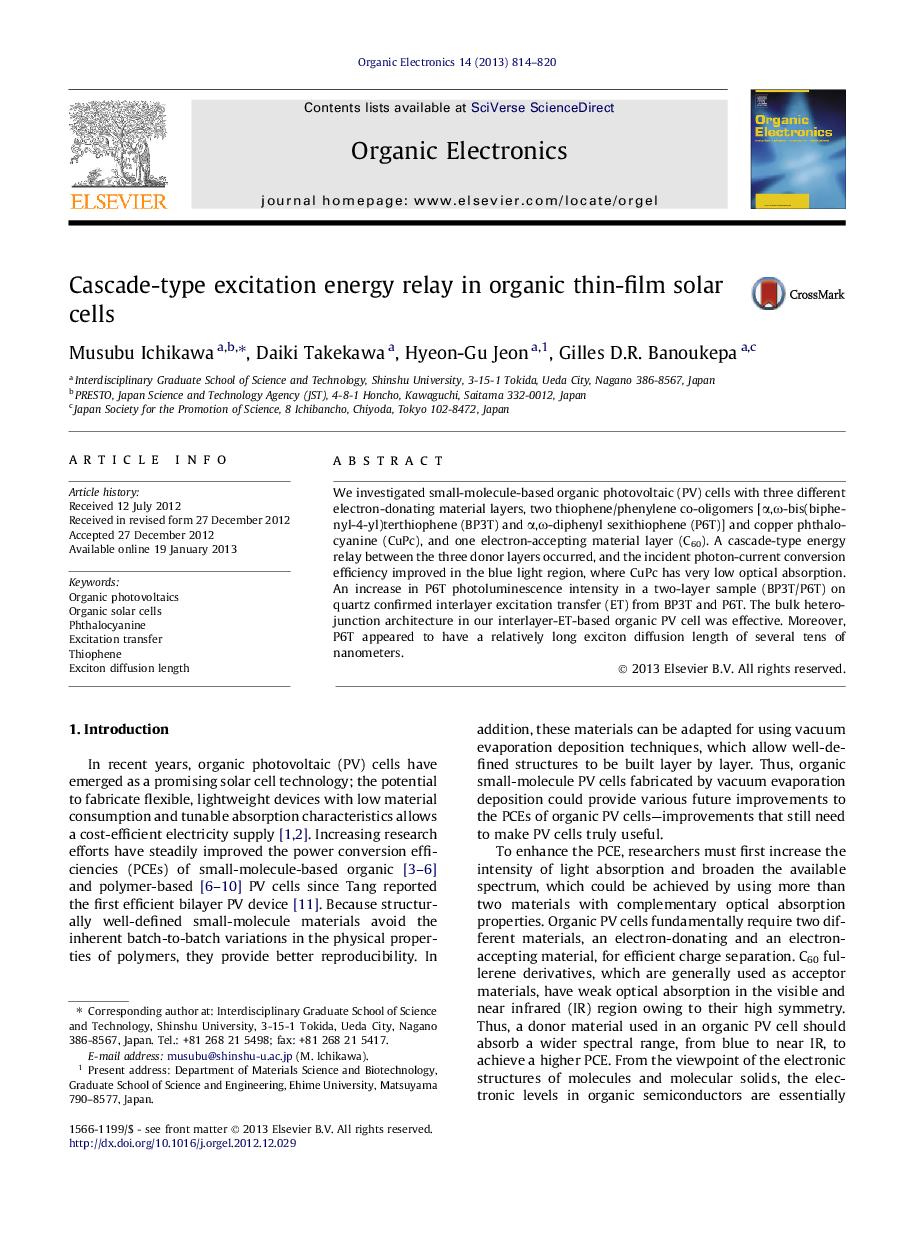| Article ID | Journal | Published Year | Pages | File Type |
|---|---|---|---|---|
| 1267418 | Organic Electronics | 2013 | 7 Pages |
We investigated small-molecule-based organic photovoltaic (PV) cells with three different electron-donating material layers, two thiophene/phenylene co-oligomers [α,ω-bis(biphenyl-4-yl)terthiophene (BP3T) and α,ω-diphenyl sexithiophene (P6T)] and copper phthalocyanine (CuPc), and one electron-accepting material layer (C60). A cascade-type energy relay between the three donor layers occurred, and the incident photon-current conversion efficiency improved in the blue light region, where CuPc has very low optical absorption. An increase in P6T photoluminescence intensity in a two-layer sample (BP3T/P6T) on quartz confirmed interlayer excitation transfer (ET) from BP3T and P6T. The bulk heterojunction architecture in our interlayer-ET-based organic PV cell was effective. Moreover, P6T appeared to have a relatively long exciton diffusion length of several tens of nanometers.
Graphical abstractFigure optionsDownload full-size imageDownload as PowerPoint slideHighlights► Organic photovoltaic cells based on interlayer excitation transfer (ET) investigated. ► Three different donor materials and C60 acceptor employed. ► Cascade-type energy relay based on interlayer ET between the 3 donor layers occurred. ► Bulk heterojunction architecture in interlayer-ET-based cells was effective.
